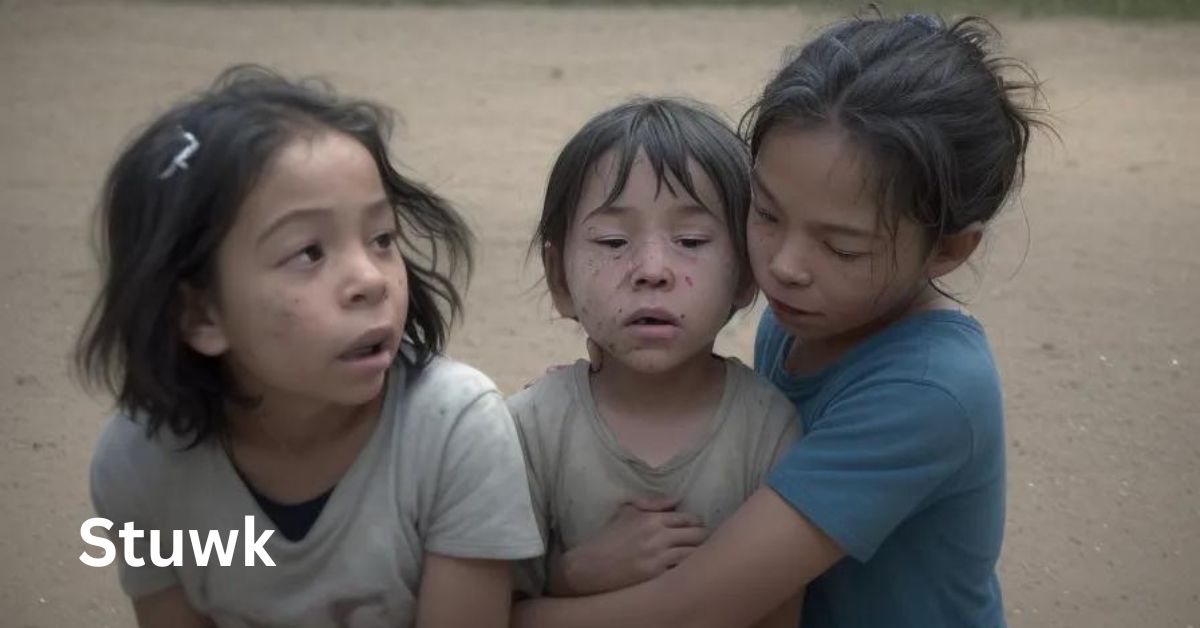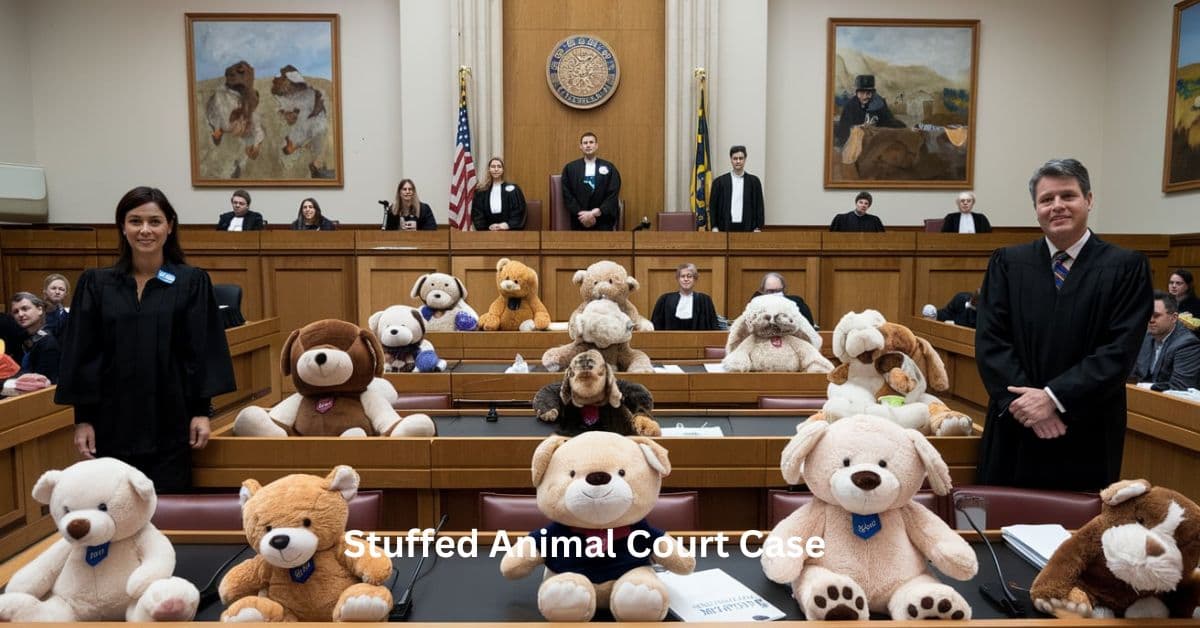Stuwk: An In-Depth Exploration of the Award-Winning Documentary Film

“Stuwk” is an inspiring and emotional documentary that dives deep into the lives of children who are caught in the complexities of international adoption. Produced by Both Ends Burning (now known as BEB Global), the film has garnered significant attention and acclaim for its powerful storytelling and its impact on the global adoption conversation. This article explores the significance of “Stuwk,” its key themes, and why it resonates so deeply with audiences across the USA.
The Story Behind “Stuwk”
“Stuwk” brings to light the struggles faced by children who find themselves trapped in the bureaucratic and legal labyrinth of international adoption. Through real-life stories, the documentary exposes the heartbreaking reality of children who are “stuck” in orphanages and foster care, unable to join their adoptive families due to various legal, political, and logistical barriers.
The film is not just a narrative about adoption; it’s a call to action. It urges viewers to understand the profound impact that stalled adoptions have on the lives of children and families. “Stuwk” is a powerful reminder of the human cost of a broken system and the need for reform to ensure that children find their forever homes.
The Impact of “Stuwk”
The documentary has resonated with a wide audience, especially in the United States, where adoption is a significant topic. The film has sparked conversations about the challenges and obstacles in the adoption process and has led to increased awareness of the need for change in the system.
One of the key achievements of “Stuwk” is its ability to humanize a complex issue. By focusing on individual stories, the film makes the struggles of these children and their prospective families relatable and real. This approach has helped to mobilize support for adoption reform and has inspired many to get involved in advocacy efforts.
Key Themes in “Stuwk”
“Stuwk” explores several key themes that are central to the issue of international adoption:
- Bureaucratic Delays: The documentary highlights how bureaucratic red tape can leave children in limbo for years. These delays can be due to a variety of factors, including changes in adoption laws, political instability in the child’s home country, and inefficiencies within adoption agencies.
- Emotional Toll: The film shows the emotional impact that being “stuck” in the system has on children. Many of these children have already experienced significant trauma, and the uncertainty of their situation only adds to their distress.
- The Fight for Reform: “Stuwk” also focuses on the efforts of activists, families, and organizations who are fighting to change the system. These individuals are working to streamline the adoption process and ensure that children are not left waiting in orphanages when there are families ready to adopt them.
- Family and Love: At its core, “Stuwk” is about the importance of family and the lengths to which people will go to bring a child into their home. The film underscores the idea that every child deserves a loving and permanent family.
The Production and Reception of “Stuwk”
Produced by BEB Global, formerly Both Ends Burning, “Stuwk” was created with the intent of raising awareness about the challenges within the international adoption system. The production team worked closely with families and adoption advocates to ensure that the film accurately portrayed the struggles and triumphs of those involved in the adoption process.
The film has been widely praised for its emotional depth and the way it sheds light on a critical issue. It has won several awards and has been featured at numerous film festivals, furthering its reach and impact.
Why “Stuwk” Matters Today
The issues highlighted in “Stuwk” are as relevant today as they were when the film was first released. International adoption remains a complex and often contentious process, with many children still waiting to find their forever homes. The film serves as a reminder that there is still much work to be done to ensure that every child has the opportunity to grow up in a loving family.
“Stuwk” has not only educated the public but has also motivated changes in policy and practice. Advocacy groups have used the film as a tool to push for legislative changes that would make the adoption process more efficient and less burdensome for families and children alike.
The Role of Advocacy in Adoption Reform
One of the most significant outcomes of “Stuwk” has been the increased advocacy for adoption reform. Advocacy groups, inspired by the film, have worked tirelessly to bring about change. These efforts have included lobbying for new laws, raising public awareness, and supporting families who are navigating the adoption process.
The documentary has also played a role in uniting different stakeholders in the adoption community, including adoptive parents, adoption agencies, and government officials. By bringing these groups together, “Stuwk” has helped to create a more coordinated and effective push for reform.
Challenges Faced by Adoptive Families
Adoptive families often face numerous challenges when trying to bring a child home, and “Stuwk” does an excellent job of highlighting these difficulties. These challenges can include:
- Legal Hurdles: Different countries have different laws regarding adoption, and navigating these can be a daunting task. Families often find themselves entangled in legal battles that can delay the adoption process for months or even years.
- Financial Strain: Adoption is an expensive process, and the costs can quickly add up. Families may have to pay for legal fees, travel expenses, and other costs associated with the adoption process. These financial burdens can be overwhelming, especially when the process is prolonged.
- Emotional Stress: The uncertainty of the adoption process can take an emotional toll on families. Waiting for months or even years to bring a child home can be incredibly stressful, and the emotional ups and downs can be difficult to manage.
- Cultural and Language Barriers: When adopting a child from another country, families often face cultural and language barriers. These can make the transition to a new family environment more challenging for both the child and the adoptive parents.
The Future of Adoption Reform
While “Stuwk” has already had a significant impact, there is still much work to be done. The film has inspired a new generation of advocates who are committed to making the adoption process more efficient and child-focused. These efforts are crucial to ensuring that all children have the opportunity to grow up in a loving and stable environment.
In the future, adoption reform will likely continue to focus on reducing bureaucratic delays, increasing transparency in the adoption process, and providing better support for adoptive families. The goal is to create a system that prioritizes the well-being of children and ensures that they are placed in loving homes as quickly as possible.
How You Can Get Involved
If you’re inspired by “Stuwk” and want to get involved in the fight for adoption reform, there are several ways you can help:
- Support Advocacy Groups: Many organizations are working to improve the adoption process and support adoptive families. Consider donating to or volunteering with these groups to help them continue their important work.
- Raise Awareness: Share the message of “Stuwk” with your friends, family, and community. By raising awareness about the challenges faced by adoptive families and children, you can help to build support for adoption reform.
- Get Involved in Legislation: Advocacy for adoption reform often involves pushing for changes in the law. Contact your local representatives and let them know that you support adoption reform. Your voice can help to bring about change at the legislative level.
- Consider Adoption: If you’re considering adoption, take the time to learn about the process and the challenges involved. By becoming informed, you can better navigate the adoption process and provide a loving home for a child in need.
The Emotional Journey of Adoption
“Stuwk” takes viewers on an emotional journey, showing the highs and lows of the adoption process. The film captures the joy of families who finally bring their child home, as well as the heartbreak of those who are still waiting. This emotional depth is one of the reasons why “Stuwk” has resonated with so many viewers.
For many families, the adoption process is filled with uncertainty and frustration. The waiting periods can be long, and the legal challenges can seem insurmountable. But despite these difficulties, the film also shows the incredible resilience and determination of adoptive families. Their stories are a testament to the power of love and the importance of family.
The Role of Governments in Adoption
Governments play a crucial role in the adoption process, and “Stuwk” highlights the need for more effective and compassionate policies. The film calls on governments to prioritize the needs of children and to work towards reducing the delays and obstacles that prevent children from finding permanent homes.
In recent years, some progress has been made in adoption reform, but there is still much work to be done. Governments need to continue to streamline the adoption process, improve international cooperation, and provide better support for adoptive families. By doing so, they can help to ensure that more children are able to find loving homes.
The Importance of Transparency in Adoption
Transparency is a key issue in the adoption process, and “Stuwk” emphasizes the need for greater openness and accountability. Many families feel that they are kept in the dark about the status of their adoption, which can lead to frustration and mistrust.
Greater transparency in the adoption process can help to reduce delays and ensure that children are placed in homes more quickly. It can also help to build trust between families, adoption agencies, and governments. By making the process more open and transparent, we can create a system that better serves the needs of children and families.
Adoption and the Media
The media has a powerful influence on public perception of adoption, and “Stuwk” has played a significant role in shaping the conversation. The film has brought the issue of adoption to the forefront, sparking discussions and inspiring action.
The media can continue to play a positive role in the adoption process by highlighting the stories of adoptive families and raising awareness about the challenges they face. By giving a voice to those involved in the adoption process, the media can help to build support for reform and ensure that more children find their forever homes.
Frequently Asked Questions (FAQs) About “Stuwk”
1. What is “Stuwk” about? “Stuwk” is a documentary film that explores the challenges and obstacles faced by children and families involved in the international adoption process. The film highlights the emotional and bureaucratic struggles that can leave children “stuck” in orphanages and foster care.
2. Who produced “Stuwk”? “Stuwk” was produced by BEB Global, formerly known as Both Ends Burning, an organization dedicated to raising awareness about the challenges of international adoption and advocating for reform.
3. Why is “Stuwk” significant? “Stuwk” is significant because it sheds light on the often-overlooked issue of children being trapped in the adoption system. The film has sparked conversations about the need for adoption reform and has inspired advocacy efforts to improve the process.
4. How has “Stuwk” impacted the adoption conversation? The film has played a key role in raising awareness about the challenges of international adoption and has motivated many individuals and organizations to push for changes in the system. “Stuwk” has helped to bring the issue to the forefront of public discourse.
5. What are the main challenges highlighted in “Stuwk”? “Stuwk” highlights several challenges in the adoption process, including bureaucratic delays, legal hurdles, emotional stress on children and families, and the need for greater transparency and reform.
6. How can I get involved in adoption reform? There are several ways to get involved in adoption reform, including supporting advocacy groups, raising awareness, getting involved in legislative efforts, and considering adoption yourself.
7. What role does the government play in adoption? Governments play a crucial role in the adoption process by setting policies, regulating adoption agencies, and working with international partners. Effective government policies are essential to ensuring that the adoption process is efficient and child-focused.
8. Why is transparency important in the adoption process? Transparency is important because it helps to build trust between families, adoption agencies, and governments. It also ensures that the adoption process is open and accountable, reducing delays and improving outcomes for children.
Conclusion
“Stuwk” is more than just a documentary; it’s a powerful call to action that highlights the urgent need for adoption reform. Through its compelling storytelling and emotional depth, the film has brought attention to the challenges faced by children and families in the adoption process. By inspiring advocacy and raising awareness, “Stuwk” has made a significant impact on the adoption conversation in the USA.
As we look to the future, it’s clear that there is still much work to be done to improve the adoption system. But with the continued efforts of advocates, families, and organizations, we can create a system that ensures that every child has the opportunity to grow up in a loving and permanent home. “Stuwk” has shown us the way forward, and now it’s up to all of us to take action and make a difference.










